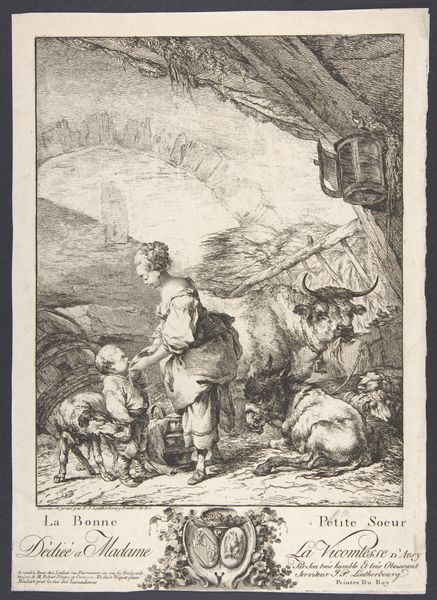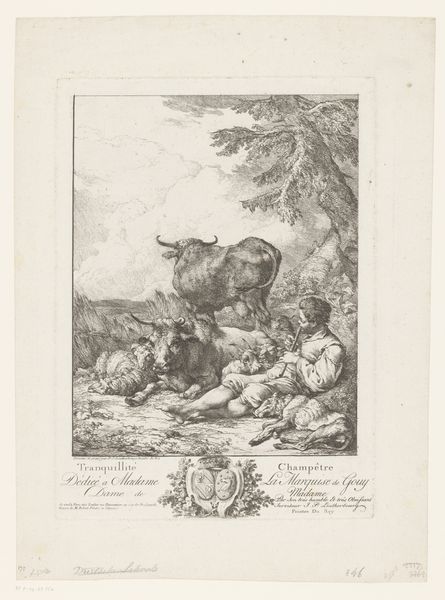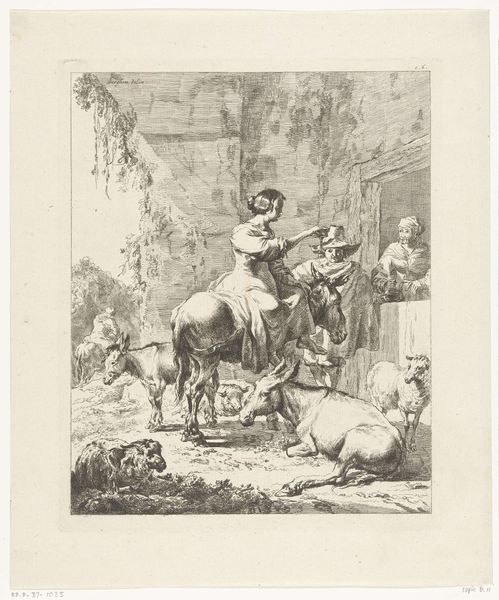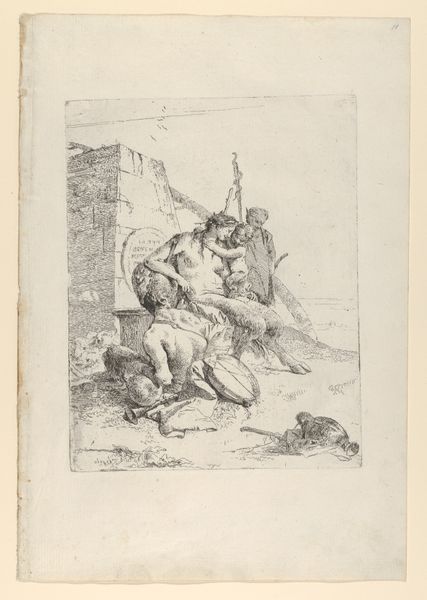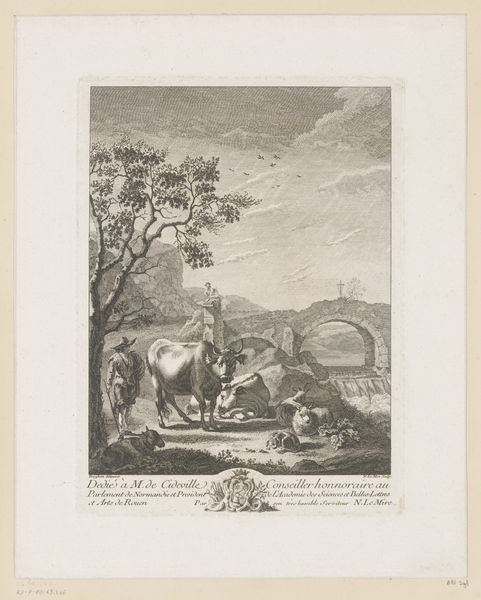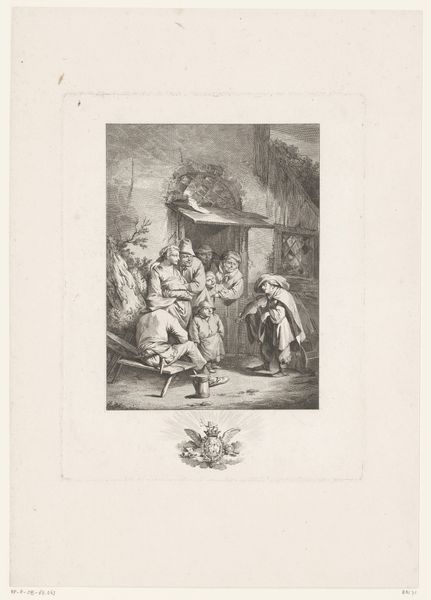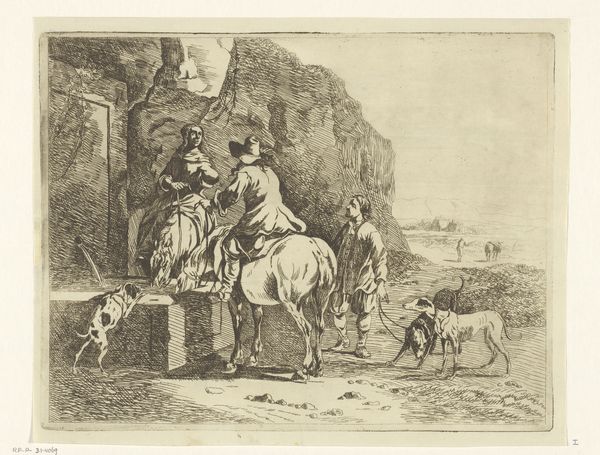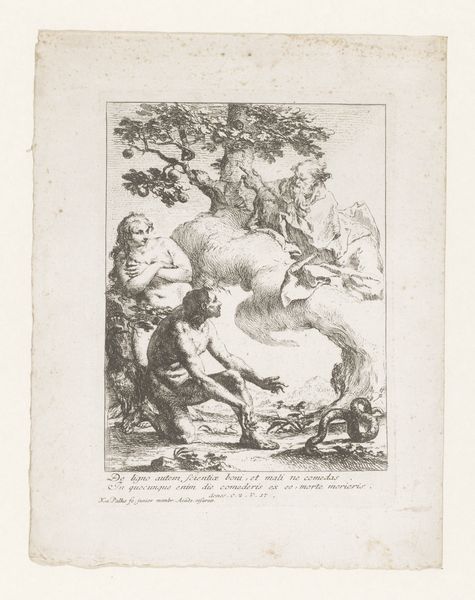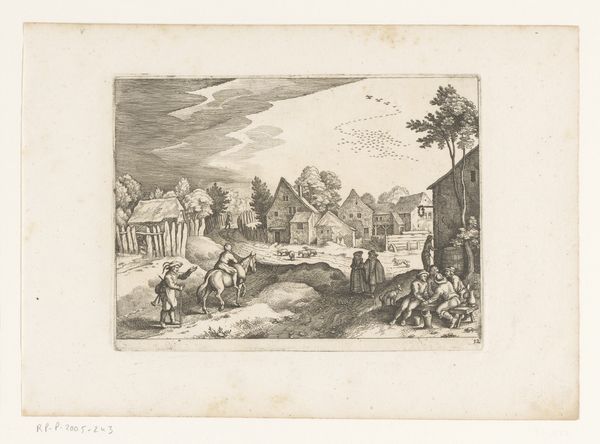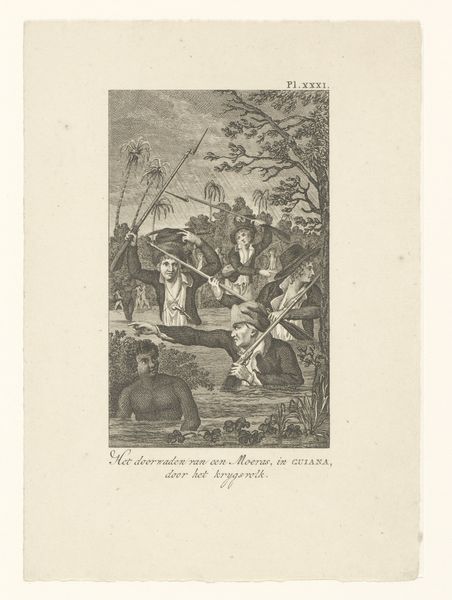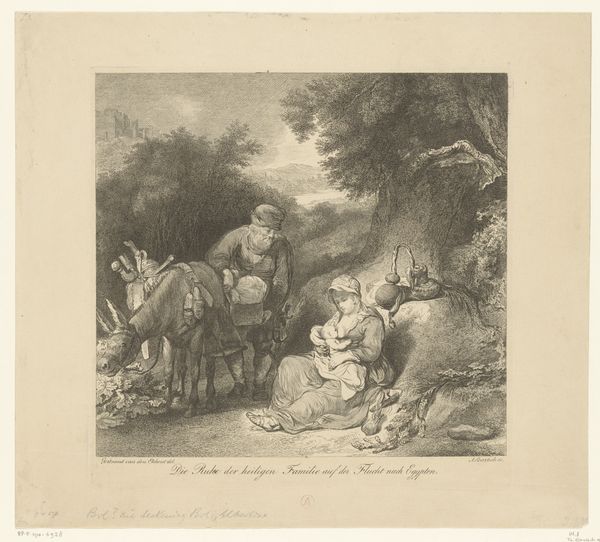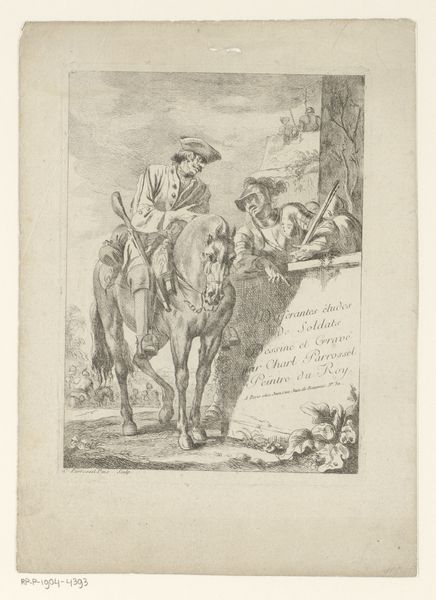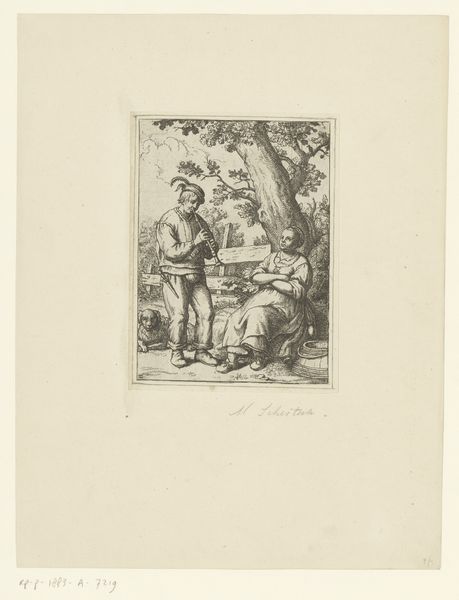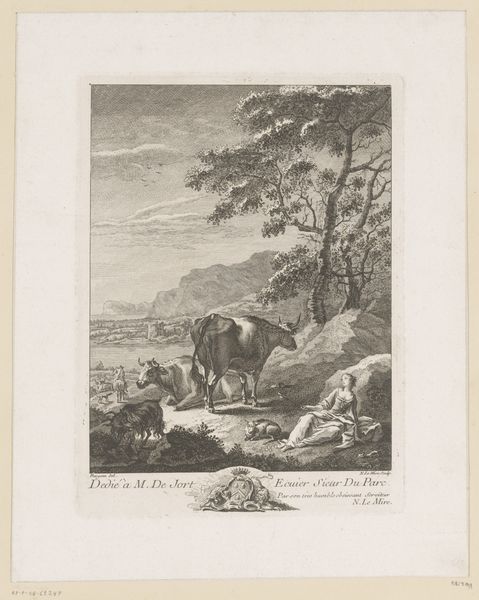
print, etching
#
baroque
# print
#
etching
#
landscape
#
figuration
#
genre-painting
Dimensions: height 326 mm, width 235 mm
Copyright: Rijks Museum: Open Domain
Curator: Here we have Philipp Jacques Loutherbourg's "Meisje met een kind in een stal," which translates to "Girl with child in a stable," an etching produced sometime between 1708 and 1812. What’s your initial read on this image? Editor: It feels remarkably intimate, doesn't it? Despite being set in a humble stable, there’s an undeniable sense of calm domesticity and even tenderness permeating the scene. It seems like an attempt to ennoble what would have otherwise been considered peasant life. Curator: Precisely. Observe how the linear precision and tonal gradations are handled. Loutherbourg carefully articulates depth. He uses the etched lines to direct the viewer’s gaze successively across the plane, with a focalization on the maternal figure. Editor: I agree, though I find myself wondering about the intended audience. Is Loutherbourg idealizing rural life for the consumption of an urban, possibly aristocratic, clientele? Is there a subtle commentary embedded within this seemingly idyllic tableau? Curator: That's plausible. Considering the Baroque influences at play, notice how Loutherbourg constructs a harmonious composition via careful control of balance and contrast. The stable setting also lends the figures monumentality despite the print’s actual diminutive size. Editor: And yet, it strikes me as more than a straightforward celebration of rural virtue. There's a fragility there, a sense of vulnerability in the young mother's gaze. Perhaps reflecting the precarity of rural existence and also an awareness of a societal gaze that both romanticizes and devalues it. Curator: Your points highlight fascinating tensions at play, as it invites nuanced interpretations regarding genre painting's ability to simultaneously reflect and shape social values through compositional cues. Editor: Absolutely. It serves as a potent reminder that what appear as neutral portrayals are often deeply encoded with historical and political complexities. This piece opens so many discussions about visibility, representation, and the lives of women during that time.
Comments
No comments
Be the first to comment and join the conversation on the ultimate creative platform.
